New Book: Problem Plants of Ohio - 5 Most Common Invasive Plant Species in Ohio
Five of the worst invasive plants homeowners are likely to encounter in Ohio (and two extremely harmful ones):
Did you know that there are over 750 non-native plant species in Ohio? That’s almost a third of all 2,200 identified plant species in the state. While most of the non-native plant species are relatively harmless, a few cause major problems while competing for space with the native trees, shrubs, and wildflowers across our landscape.
"Not all of those non-native species are big problems, so you’ve got extremes," Megan Griffiths-Ward said. "The biggest problems are those listed as invasive species or prohibited noxious weeds. And, then you have other things that are often largely restricted to areas where they are planted and cultivated, so they’re present as non-native species, but they’re not really getting out into the environment and causing problems."
1. Garlic Mustard (Alliaria petiolata)–This biennial herbaceous plant is currently considered one of the worst invasive plant species in Ohio. First-year plants form basal rosettes in the early spring, and these remain green through the following winter. Plants bolt and develop small white flowers in the second year. All plant parts give off a strong odor of garlic when crushed. Plants in both the rosette and flowering stages can be pulled by hand or sprayed with glyphosate. Native alternatives that could work in place of Garlic Mustard include: Chamerion angustifolium (fireweed), Clarkia pulchella (pinkfairies), Geranium maculatum (wild geranium), Lobelia siphilitica (great blue lobelia), Penstemon digitalis (smooth penstemon), Penstemon hirsutus (hairy beard-tongue), Phlox divaricata (wild blue phlox), Phlox glaberrima (smooth phlox), Phlox paniculata (garden phlox), Phlox pilosa (prairie phlox), Physostegia virginiana (obedient plant).
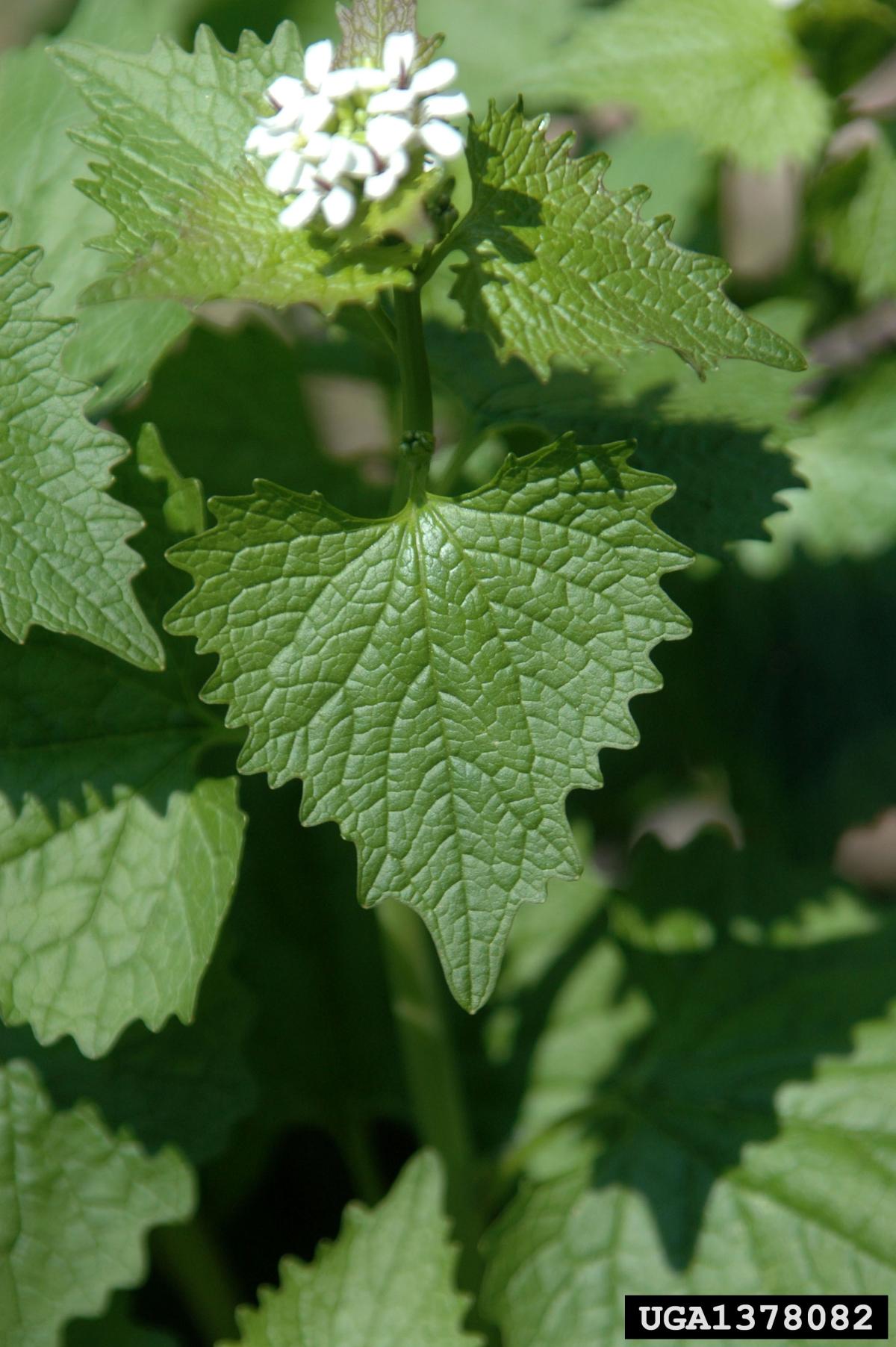
2. Multiflora Rose (Rosa multiflora)–A perennial shrub with stout stems and recurved prickles. It forms small white or pinkish flowers in clusters at the ends of stems. This species is highly invasive throughout most of the northeastern United States, where it is a major problem in both disturbed and natural areas. Small plants can be pulled, but larger plants may need to be cut and the stems treated with triclopyr or glyphosate.
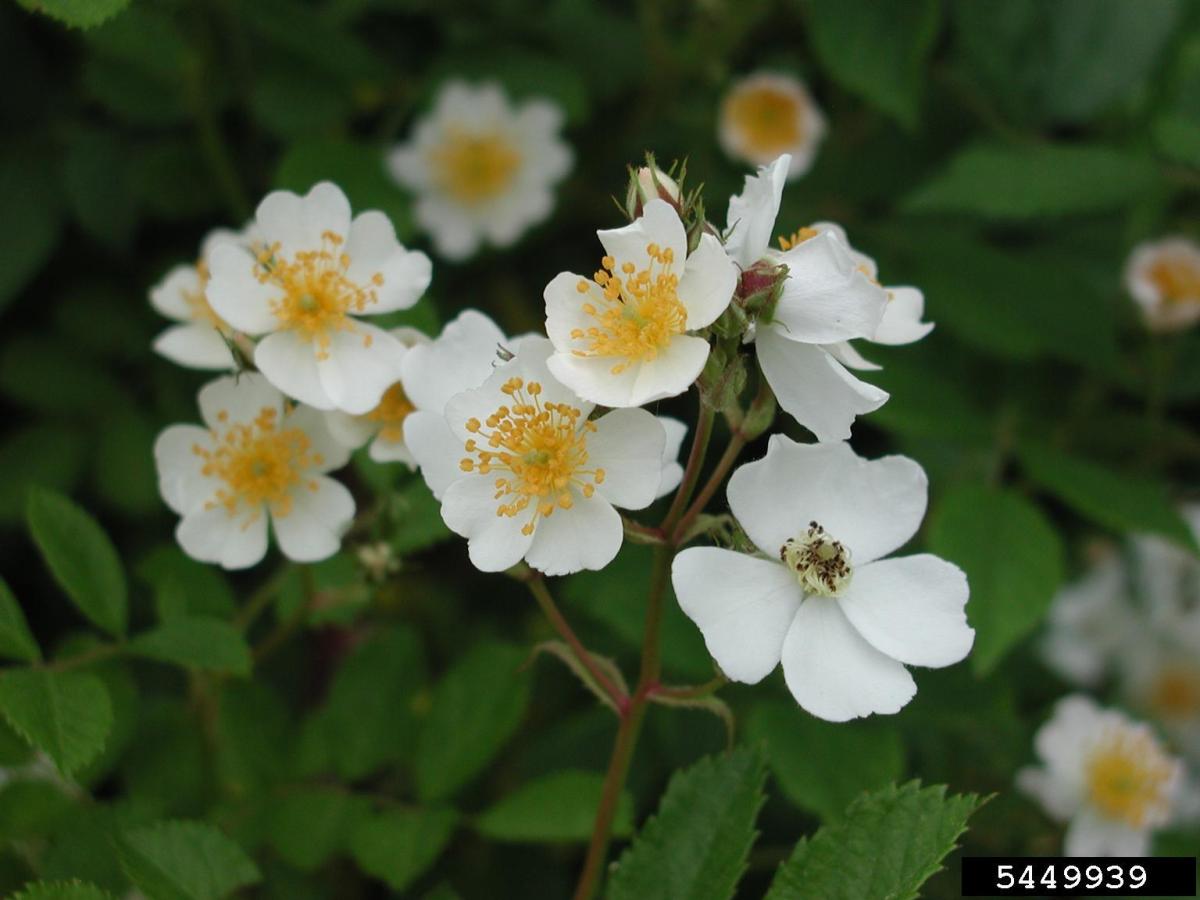
3. Shrub Honeysuckles (Lonicera maackii, L. morrowii, L. tatarica, and Lonicera x bella)–These are woody shrubs with white, yellow, or pink flowers that tend to occupy the understory of forests. They were introduced as ornamental species and have escaped from cultivation. They inhibit the growth of native understory forbs, shrubs, and tree seedlings. Their shallow root system makes it possible for most plants to be pulled out; this is easier with a weed wrench or similar tool. For very large plants, plants can be cut and the stems treated with glyphosate or imazapyr.
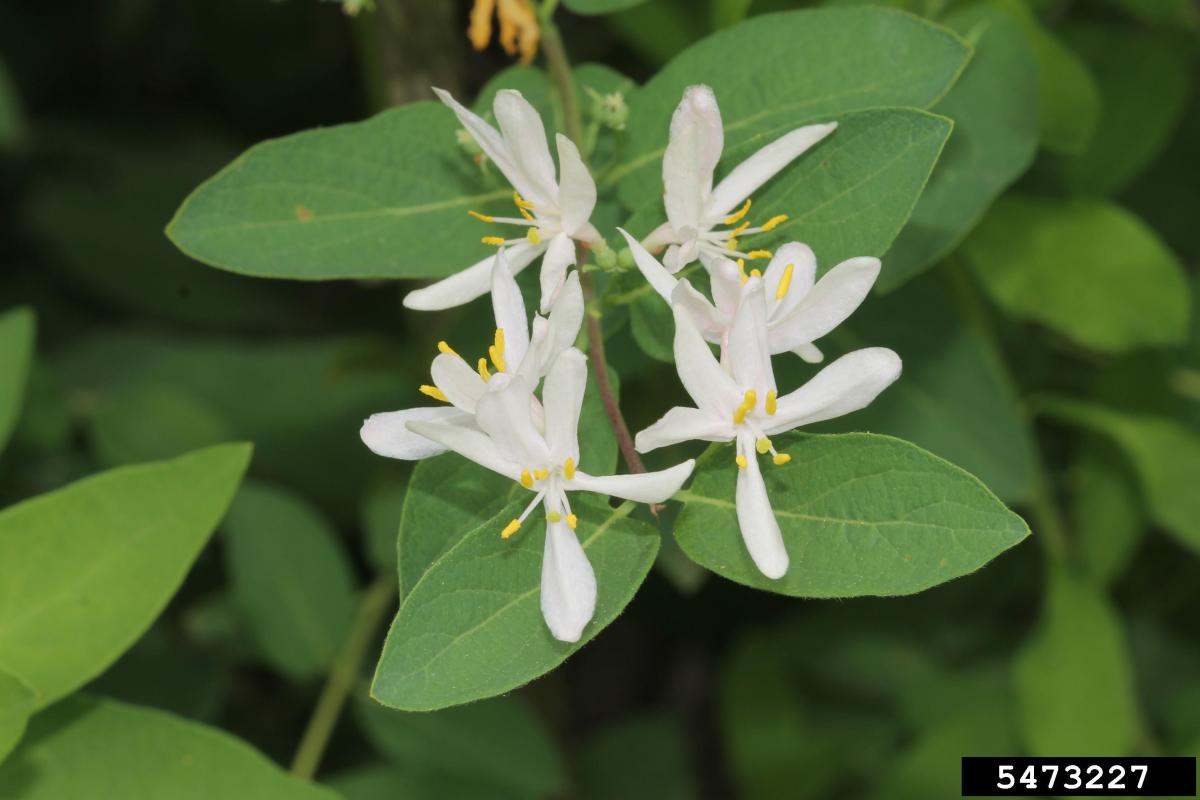
4. Asiatic Bittersweet (Celastrus orbiculatus)–A woody vine that climbs by scrambling and twining. Twining vines can strangle the trees or shrubs on which they grow, and the weight of dense vine cover can cause trees to fall over. Seedlings can be pulled by hand, taking care to remove all root fragments. Larger plants can be cut back and the root system dug out. Cut stumps can also be treated with triclopyr or a strong formulation of glyphosate.
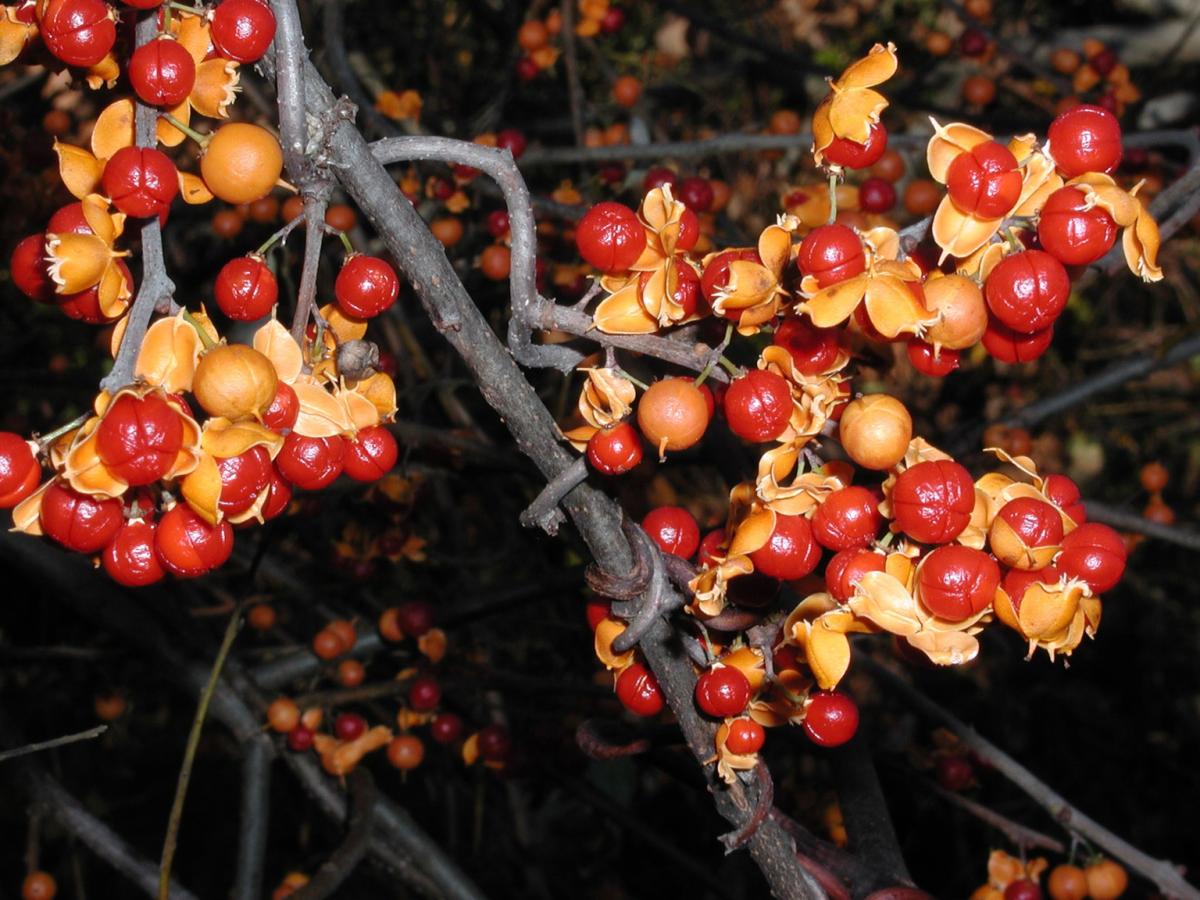
5. Buckthorns (Frangula alnus and Rhamnus cathartica)–These related species can grow as large shrubs or small trees. This fast-growing species spreads to hedges, gardens, and forests, thanks to its numerous, bird-dispersed fruits. Once established, trees are difficult to remove, so it is useful to know how to identify this species and control it early. Seedlings can be pulled by hand or using a weed wrench. Larger plants can be cut back and the stems treated with glyphosate or triclopyr.
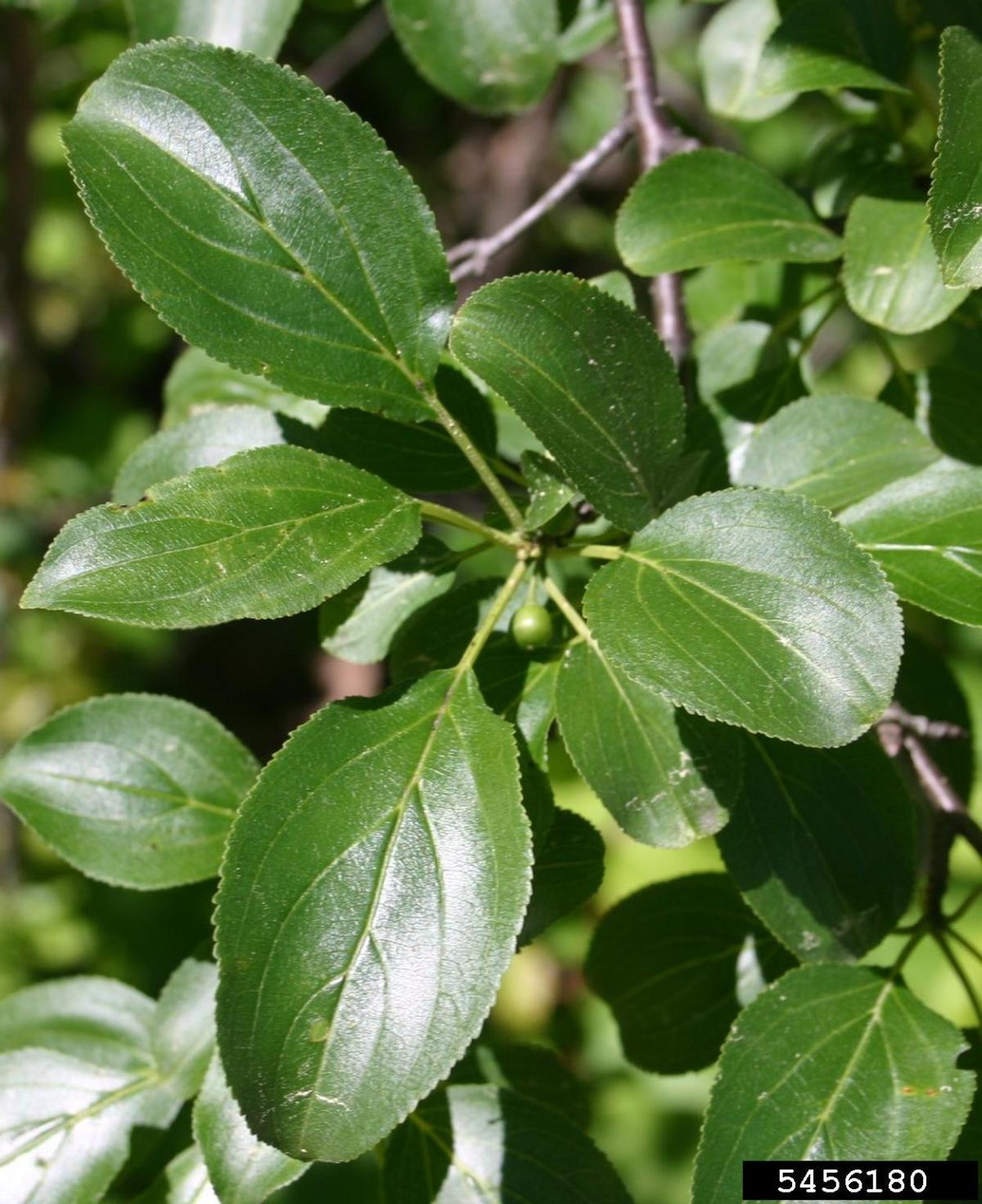
Two Extremely Harmful Invasive Species: DO NOT TOUCH!
You’ve most likely come into contact with poison ivy (Toxicodendron radicans) and had an itchy, blistering skin reaction to its sap, but that’s minor compared to giant hogweed (Heracleum mantegazzianum) and wild parsnip (Pastinaca sativa). If you get the sap from either of those noxious weeds on your skin, it reacts to the ultraviolet light from the sun and causes phytophotodermatitis which can swell and blister your skin. If you get it in your eyes it can cause temporary blindness.
However, rest assured, these are rare and there are not many other poisonous plant species in Ohio.
Question: How do invasive plant species spread into Ohio?
David Ward: "Almost all of these species have come across because of humans. Most have come from Europe, some have come from Asia. There are a few from other places in the world, but almost all are from European or Asian origin. Many of them were brought up on purpose, intentionally, so either to use as food, or to use as ornamental species in gardens. And, then, some came over with humans accidentally. So things came across in soil ship ballast, especially wetland species like phragmites and purple loosestrife.
So, in the old days, the ships did not use water ballast, but water ballast is the standard these days. Back in the 1800s they would use soil ballast, and that’s where a lot of these plants came in. So, there’s been a big change in recent years. So, a lot of the invasive species that are coming into the Great Lakes now are mostly aquatic organisms, usually very small microorganisms or animal species that are getting into the Great Lakes through water ballast. But, in the past it was soil ballast that was used by the ocean-going boats. Some invasive species came across in packing material too. And, then once here, they can be moved around by people, by machinery, cars, and animals too, so a lot of these woody horticultural species, shrubs and trees, that are problematic have beautiful, tasty and fleshy fruits that are dispersed by birds. The plant sits in somebody’s garden but the seeds get moved all over the place in the gut of the bird once they’ve ingested the fruits. Bush honeysuckles, the shrub honeysuckles, the buckthorns, the multiflora rose, all get moved by animals.
